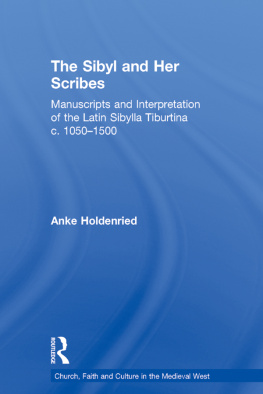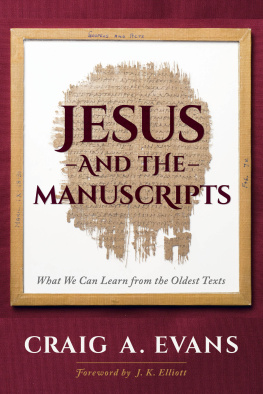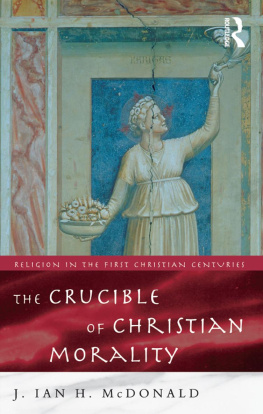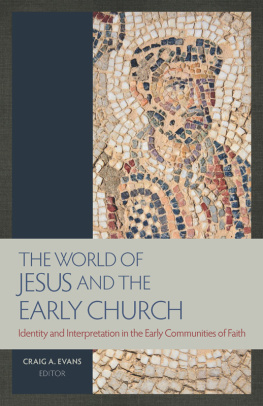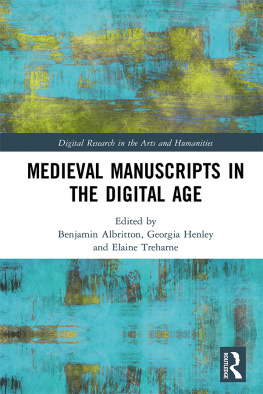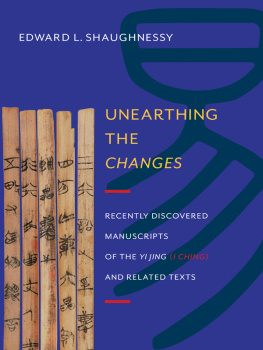GODS LIBRARY
GODS LIBRARY
The Archaeology of the Earliest Christian Manuscripts

BRENT NONGBRI


Published with assistance from the foundation established in memory of Calvin Chapin of the Class of 1788, Yale College.
Copyright 2018 by Yale University.
All rights reserved.
This book may not be reproduced, in whole or in part, including illustrations, in any form (beyond that copying permitted by Sections 107 and 108 of the U.S. Copyright Law and except by reviewers for the public press), without written permission from the publishers.
Quotations from Legends of the Centuries, by Charles Mla (Fondation Martin Bodmer), English translation by David Macey, 2004 ditions Cercle dArt, Paris.
Quotations from Carl Schmidt, Die neuesten Bibelfunde aus gypten. Zeitschrift fr die Neutestamentliche Wissenschaft 30 (1931): 285293, De Gruyter, Zeitschrift fr die Neutestamentliche Wissenschaft, Walter De Gruyter GmbH Berlin Boston, 1931. Copyright and all rights reserved. Material from this publication has been used with the permission of Walter De Gruyter GmbH.
Yale University Press books may be purchased in quantity for educational, business, or promotional use. For information, please e-mail (U.K. office).
Set in Janson type by Integrated Publishing Solutions.
Printed in the United States of America.
Library of Congress Control Number: 2017963318
ISBN 978-0-300-21541-0 (hardcover : alk. paper)
A catalogue record for this book is available from the British Library.
This paper meets the requirements of ANSI/NISO Z39.48-1992 (Permanence of Paper).
10 9 8 7 6 5 4 3 2 1
For Mary Jane Cuyler
Contents
ACKNOWLEDGMENTS
I AM GRATEFUL FIRST of all to Alanna Nobbs, Larry Welborn, and the Department of Ancient History at Macquarie University for taking a risk and bringing me out to Australia to work on early Christian manuscripts. This book definitely bears the stamp of the unique environment of Macquaries Department of Ancient History, where the study of the papyrological and epigraphic record of ancient Christians has been central for decades. I also owe a huge debt to Gill Ellis and the whole Arts Research Office at Macquarie for teaching me how to navigate the Australian grant system, a system to which I am equally indebted. Funding that supported this research came from the Department of Ancient History at Macquarie, the Society for the Study of Early Christianity, a Macquarie University Research Fellowship, and a Discovery Early Career Research Award from the Australian Research Council.
The last revisions on the book took place during an enjoyable stay at Aarhus University. I am obliged especially to Ren Falkenberg and Kasper Bro Larsen for making that happen. Special thanks are due to Paul Dilley, Melissa Moreton, and everyone at the University of Iowa involved in the Mellon Sawyer Seminar on manuscripts across premodern Eurasia, which was an eye-opening experience that helped to broaden my perspective on the history of book production at a key moment of the project.
Many of the ideas presented in this book were first hammered out in talks presented at Fordham University, Princeton University, Trinity College Melbourne, the University of Manchester, the University of Notre Dame, the University of Sydney, the University of Texas at Austin, and Yale University. The Papyrology and Early Christian Backgrounds group at the annual meetings of the Society of Biblical Literature has become my home away from home for the past decade, and I very much appreciate the organizers, fellow presenters, and audience members at these sessions. I would be remiss not to thank Ann Hanson, who first introduced me to papyri and changed the direction of my research.
Thanks are also due to the curators of the many manuscripts and archives that I was fortunate enough to study. I express my gratitude to the staff at the Bentley Historical Library and the Papyrology Collection at the University of Michigan; the Biblioteca Apostolica Vaticana; the British Library; the Chester Beatty Library; the Houghton Library at Harvard University; the John Rylands Library at the University of Manchester; the Pierpont Morgan Library; the Magdalen College, Sackler, and Bodleian libraries at the University of Oxford; the Scheide Library and the Seeley G. Mudd Manuscript Library at Princeton University; the Special Collections at the Claremont Colleges Library; and the Special Collections at the University of Western Australia. Stasa Bibic, Florence Darbre, and the entire staff of the Fondation Martin Bodmer were especially helpful and accommodating during my visits to Cologny, and David Hogges guidance in the archives at the Freer Gallery at the Smithsonian Institution was indispensable.
This book has evolved over a number of years and owes much to the patience and guidance of Jennifer Banks, Heather Gold, Susan Laity, and the production team at Yale University Press. Jessie Dolch provided expert copyediting on this challenging manuscript. I am deeply grateful to all these people.
One of the real pleasures of undertaking this project has been benefiting from the boundless enthusiasm and knowledge of AnneMarie Luijendijk. I have learned a great deal by watching how she frames questions about early Christian book culture, and Im thankful for her input on the manuscript at several points in the project. Im also obliged to others who read part or all of the manuscript at various stages: Roger Bagnall, Doug Boin, Josephine Dru, Sean Durbin, Felicity Harley-McGowan, Edwin Judge, Hugo Lundhaug, Dale Martin, Julia Miller, Roberta Mazza, and Gregg Schwendner. Many other friends have patiently answered questions over the past few years. I single out Malcolm Choat, Cavan Concannon, Stephen Emmel, Larry Hurtado, D. C. Parker, Dan Sharp, and Sofa Torallas Tovar. Their advice saved me from many errors. Those that remain are on me.
I began this project just after I married Mary Jane Cuyler, who has been an inspiring conversation partner through every step of the research, writing, and revision process. Her insightful feedback and admirable lack of tolerance for scholarly fibs have made this a much better and more honest work.
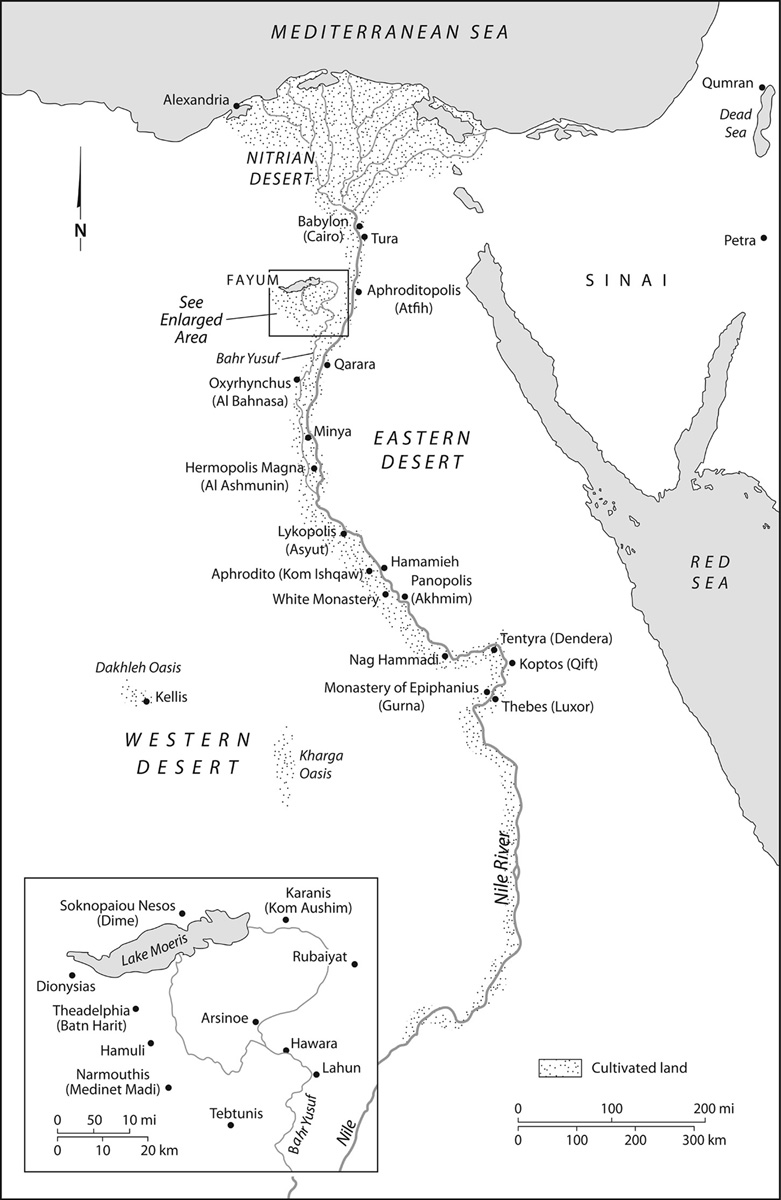
Map showing locations in Egypt mentioned in the text.
(Cartography by Bill Nelson.)
Prologue: Reintroducing the Earliest Christian Manuscripts
L ATE IN 1907, IT was publicly revealed that the American businessman Charles Lang Freer (18541919) had acquired a group of four early Christian books from an antiquities dealer in Egypt. Freer, who made a fortune from the production of railcars in Detroit during the 1890s, had established himself as a discerning art collector well before he first traveled to Egypt in 1906. For the next twelve months, only a select circle of experts knew the significance of what Freer had bought. Then, in December 1907, one of these scholars announced to the world that Freers purchase had consisted of
a Greek manuscript on parchment containing Deuteronomy and Joshua datable by its handwriting to the fourth or fifth century CE
Next page

